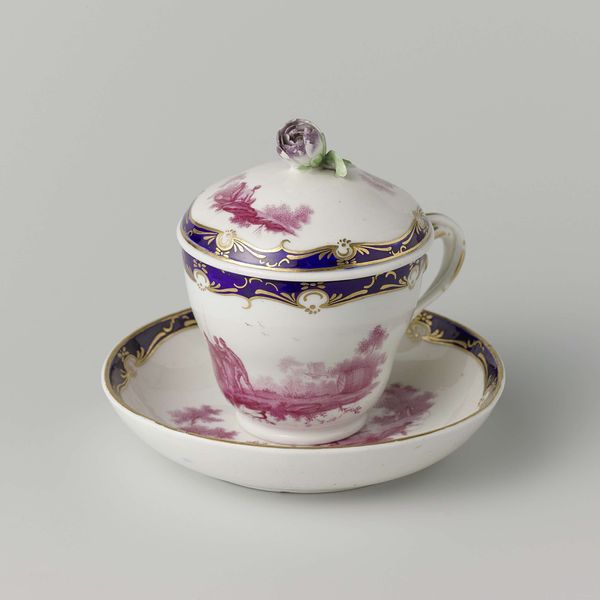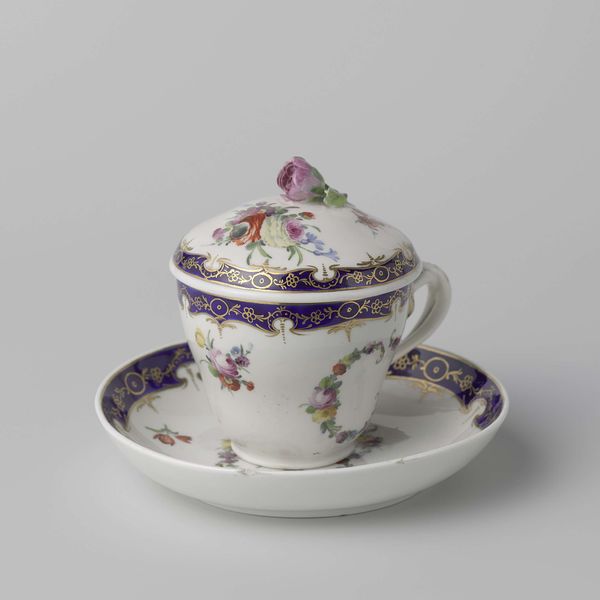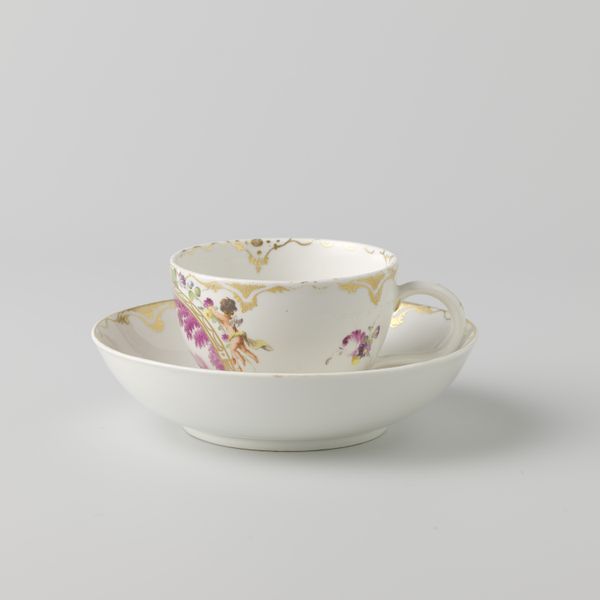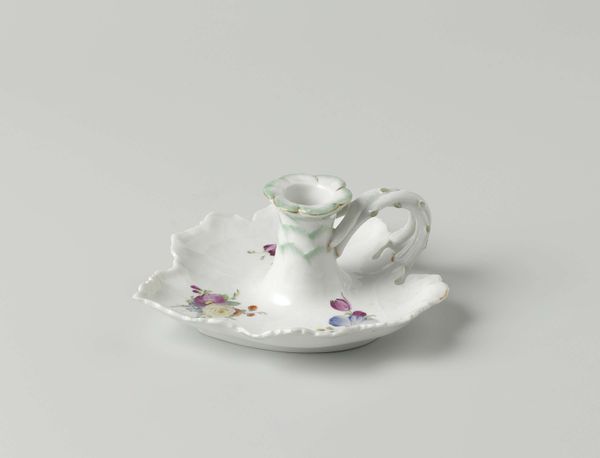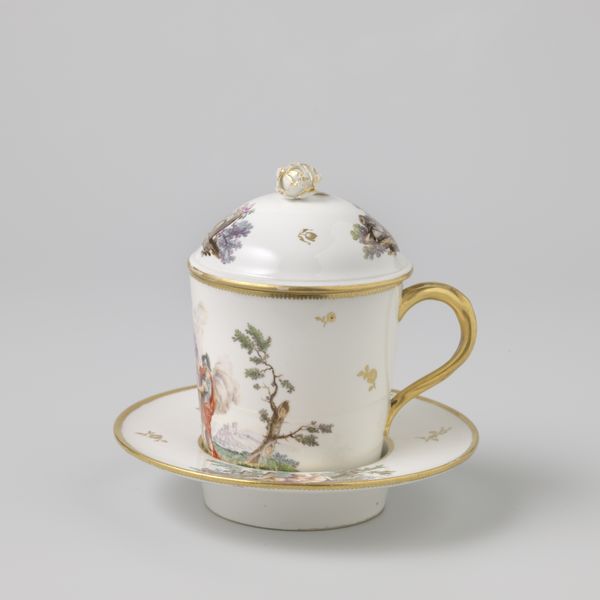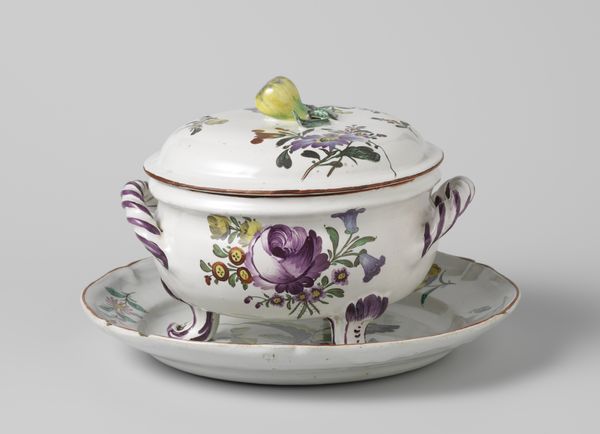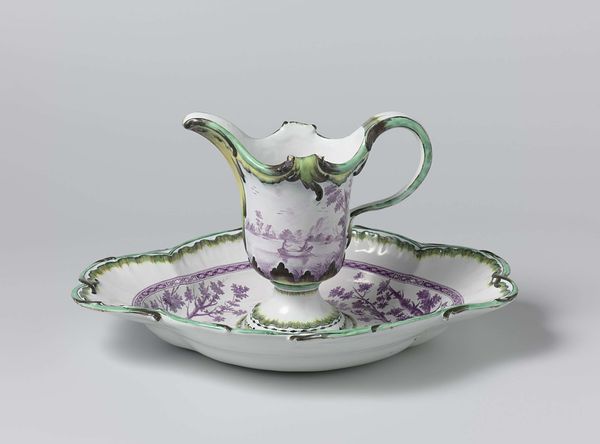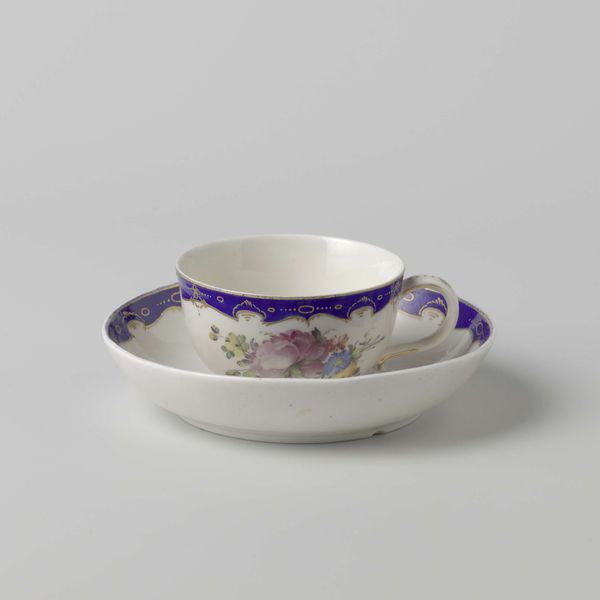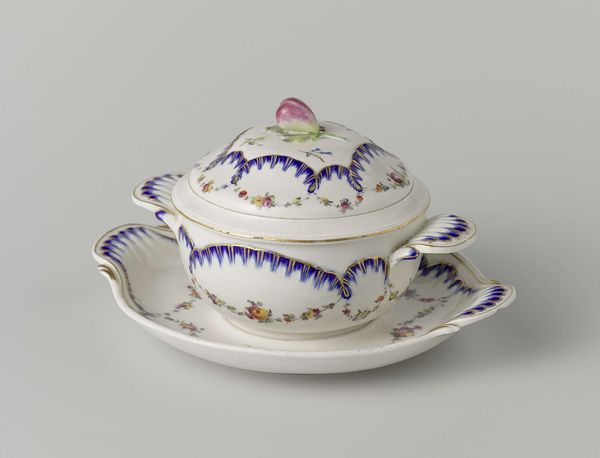
Dimensions: height 8.5 cm, diameter 14 cm
Copyright: Rijks Museum: Open Domain
Curator: Here we have an exquisite piece of decorative art from around 1777 to 1790, a lidded chocolate cup and saucer crafted by Porseleinfabriek Den Haag, now residing here at the Rijksmuseum. Editor: Oh, how lovely! It feels so frivolous and decadent, almost comically ornate. I can practically taste the rich chocolate already. Curator: It certainly embodies the Rococo style, known for its elegance and elaborate ornamentation, typical of the period. Porcelain became a symbol of status, a canvas for displaying wealth and refinement. Editor: Look at the portrait on the side! It's nestled within those swirling floral designs. It’s like a miniature theater of high society painted on the cup. Makes you wonder about the rituals surrounding the simple act of enjoying a cup of chocolate, doesn't it? Curator: Absolutely. Drinking chocolate was a social ceremony, and objects like these were instrumental in performing those rituals of refinement, almost propagandistic demonstrations of privilege during turbulent times. Editor: And the colors! Those pastels, pinks and greens mixed with darker maroon touches... It all feels so light and yet carries this weird sense of something heavier beneath the surface, you know? Like sugared anxieties, right before the Revolution… Curator: Precisely. Such seemingly frivolous displays often mask underlying social tensions, serving as a form of escapism amidst broader political upheaval. The cup presents an idealistic vision… far removed from reality for most people at the time. Editor: It’s incredible how a humble cup can be so packed with unspoken meaning and hidden depths, isn’t it? Makes you rethink your everyday latte... Curator: Indeed. It offers us a potent reminder that the objects we surround ourselves with carry embedded historical and social narratives, if we only take the time to notice them. Editor: Well, next time I have a hot chocolate, I'm definitely giving it a historical toast. Thanks for illuminating my sugary fantasies!
